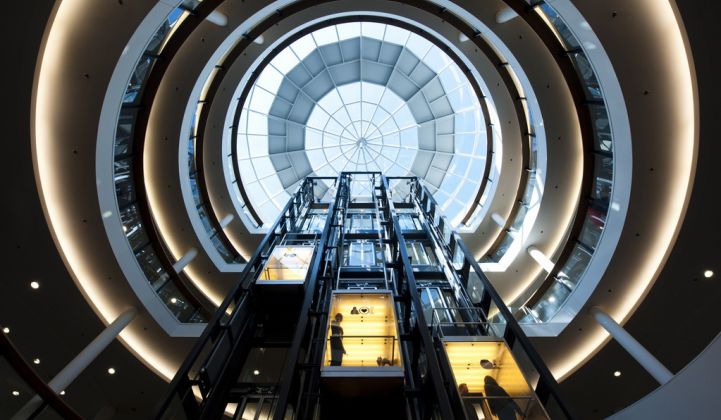Today’s building design software can take hours to process the changes in complex sustainability variables like lighting, HVAC, weather, sunlight, windows, occupancy, and rooftop solar panels that make up a truly “green” building. Sefaira says it can do it in 10 seconds or less from the cloud, and on Tuesday, it landed $10.8 million in venture capital investment to bring its technology to a global scale.
It’s the first disclosed venture capital round for the London-based software startup. Braemar Energy Ventures led the Series A round, in partnership with Dutch-based Chrysalix SET and UK-based Hermes GPE.
Sefaira was founded in 2009 with the idea of speeding up today's teeth-grindingly slow green building design process, CEO Mads Jensen said in a Wednesday interview. Today’s software can take hours to process changes in a complex model, he said, leaving engineers sitting around waiting for their own servers (or a consultant in another office) to crunch the latest set of new variables.
Sefaira takes that data processing load to the cloud, and has set a goal of performing the most complex calculations its customers can throw at it in 10 seconds or less, Jensen said. That changes a slow-moving design process into one that “helps you explore the data in an immersive way,” he said.
In late 2011, Sefaira rolled out the first version of its cloud-based “physics engine” to about 30 customers, including architecture and engineering firms, ESCOs and efficiency retrofit companies, as well as a few utilities, Jensen said. While he wouldn’t name any customers, he did say that Sefaira hopes to bring a commercial product to market by mid-2012.
Think of it as the SimCity-fication of green building design. Much like a video game, super-fast data processing allows engineers to play with designs on the fly, or salespeople to plug in customer questions -- what’s the cost and energy difference for several choices of window glazing, on cloudy and sunny days? -- and get results in near-real-time during presentations.
One of the startup’s early targets was Google SketchUp, Jensen said. Sefaira has worked closely with the 3D modeling platform, with the idea of extending its relatively simple analytical functionality to a scale that could support real, physics-based models of energy flow, water and waste usage, and other sustainability metrics.
Faster modeling can also help in the build phase of a project, with different building materials and design choices plugging into the model to more accurately reflect reality. Sefaira is also working with some of its unnamed customers on assisting green retrofit design tools, or the software that helps utilities examine their customers’ building and energy data to target efficiency incentives at the most wasteful buildings, Jensen said.
While there are a number of software startups tackling discrete chunks of the building energy efficiency conundrum, Autodesk is far and away the leader in green building design IT. It’s been launching version after version of its sustainability design and analysis software, and also helps utilities with smart grid deployments.
But the kinds of performance upgrades that Sefaira brings to the table aren’t a threat to Autodesk, as much as they are an opportunity. We’re going to see a flowering of new IT to support the green building, renewable energy and smart grid industries, and one key set of challenges will be around handling the massive amounts of data these projects create, in a model as close to reality as possible. Speeding up that process should help everyone.



